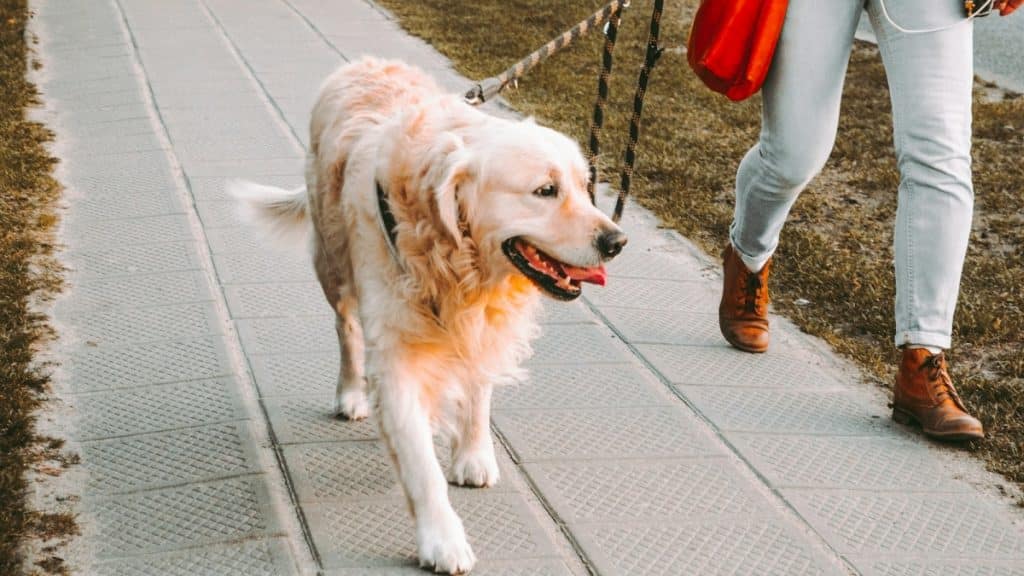Why Picking the Right Harness Matters
When venturing out for your daily walks, having the right equipment can transform the entire experience for you and your dog. Unlike traditional collars that may place undue stress on a dog’s neck and barking reflex, a harness distributes pressure over a larger area, safeguarding against injuries.
The significance of choosing the correct harness extends beyond mere comfort. It is crucial in preventing accidents and enhancing control, particularly for high-energy dogs prone to sudden lunges. This makes it an essential part of your dog’s walking routine, offering peace of mind and turning challenging walks into moments of bonding and exploration.
Understanding Harness Features
The vast array of harness options can seem overwhelming, but understanding key features can make the selection process easier. Many harnesses come equipped with front-clip mechanisms to discourage pulling and give the owner better control. Meanwhile, others incorporate extra padding around the chest, making them ideal for dogs with sensitive skin or those prone to chafing. Notably, a well-designed no pull dog harness is a game-changer, ensuring each outing is safe and enjoyable.
Dog owners who want convenience without sacrificing security favor harnesses with easy-on, easy-off buckles. Meanwhile, some designs include multiple adjustment points to accommodate puppy growth or weight changes in older dogs. Each feature contributes uniquely to improving the walking experience, as explained in this comprehensive guide about harness features, making every choice count for maximum safety and enjoyment.
Advancements in Harness Design
The world of dog equipment has evolved significantly, with harnesses now boasting advancements that enhance both usability and style. Modern materials offer breathable, water-resistant textures that endure various weather conditions while remaining gentle on your dog’s coat. Many manufacturers are incorporating reflective strips, a crucial element for those late-evening or early-morning strolls, ensuring visibility and safety in low-light conditions.
In addition, today’s harnesses often feature ergonomic designs that contour to a dog’s body shape, allowing a full range of motion without pressure points. Such advances make life easier for dogs and owners who seek an efficient way to enjoy walks without constant readjustment or discomfort for their furry companions. These innovations herald a brighter, more comfortable future for dogs participating in daily adventures.
Harness Training Tips for Your Dog
Introducing a new harness can be an exciting but gradual process. Start by familiarizing your dog with the harness and letting them sniff and explore it before attempting to put it on. Use treats and verbal praise to create a positive association, turning this new accessory into something enjoyable rather than foreign or stressful.
Begin with short, controlled walks around your home or backyard to get your dog accustomed to the sensation of walking with a harness. Gradually extend the duration of these walks, always rewarding them for calm behavior and adjusting as necessary. The key is consistency—encouraging positive experiences with genuine patience will ultimately cultivate a successful transition.
Enhancing The Walking Experience
While a suitable harness significantly improves walk quality, the chosen path can further enrich each experience. Urban areas provide a tapestry of sights and sounds, stimulating your dog’s senses and allowing them to practice socialization skills. Conversely, rural settings offer tranquility and space, presenting a contrast that many dogs find calming.
Balancing these environments ensures various experiences, keeping your dog mentally stimulated and physically active. In addition, planning diverse routes can help maintain engagement and prevent walks from becoming mundane. Discover more tips on creating engaging walking routines that can turn your canine exploration into memorable adventures.
Troubleshooting Common Harness Issues
Despite careful selections, issues like tightness or slipping can arise. Ensuring a correct fit is paramount; a properly fitting harness should allow two fingers to slip comfortably between your dog’s body and the harness strap. This adjustment ensures your pet’s comfort without compromising security, especially for those Houdini-like escapes some dogs manage.
If your dog appears irritated or uncomfortable, exploring different styles or sizes may be worth exploring. A few minor adjustments can transform an ill-fitting harness into one that fits like a glove. Addressing issues as soon as they arise, rather than leaving them unchecked, promises a more pleasant experience.
Conclusion: A Better Walk Awaits
Investing in a well-fitting and thoughtfully designed harness can elevate walks from simple routine tasks to anticipated activities eagerly enjoyed by both you and your pet. As you explore nature or cityscapes, these moments become invaluable facets of your shared companionship.
With each step, the proper harness ensures those outings are filled with joy, exploration, and peace of mind. With knowledge and the best gear, you stand ready to embark on countless memorable journeys. So here’s to making every walk an adventure worth taking. Happy walking!
